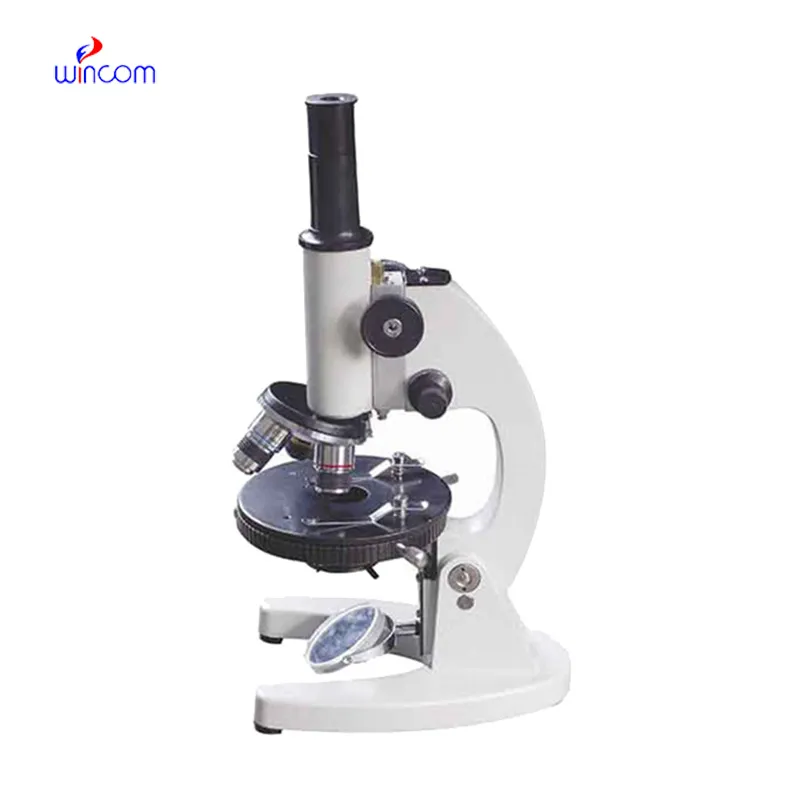
The compound microscopes combines technological innovation and practical design, with distortion-free, clear-quality imaging at every magnification. The mechanical stability and focus precision controls of the compound microscopes ensure accurate specimen positioning. The compound microscopes enhances sample visibility in varying light conditions using a strong illumination system. Optional camera adapters and measuring software are offered to extend its use, making it suitable for various scientific and educational environments.

The compound microscopes is applied widely in biology for studying cells, tissues, and microorganisms with unmatched clarity. Clinically, it is applied to assist in the diagnosis of infections, blood diseases, and cell disorders. In industry, the compound microscopes is employed for material examination, surface flaw detection, and microstructure analysis of metals and polymers. In institutions of learning, it is a teaching tool that helps students learn microscopic anatomy and chemical reactions. Its use extends into environmental monitoring where it is used to analyze soil or water samples to ascertain quality and detect pollutants.

The compound microscopes of the future will be to expand its analytical power. Future models will integrate optical accuracy with the enhancement of the computer, creating hybrid devices with real-time analysis functions. Automation will ease routine operations, making laboratory workflow more efficient. The compound microscopes will also be able to integrate cloud-based platforms for real-time sharing of data and remote access. Environment-friendly technology development will yield models that are energy-efficient without sacrificing precision but reduce environmental impact.

To continue functioning optimally, the compound microscopes must be treated to regular maintenance with attention to detail. Clean lenses with soft strokes using microfiber cloths or dedicated wipes. Avoid spraying cleaners directly on the optics. Keep the stage and focus assembly residue and corrosion free. Always shut down when cleaning electrical components. When storing, cover the compound microscopes and place it in a dry, temperature-controlled environment. Periodic service inspections will ensure accurate focusing, smooth operation, and long-term durability.
A compound microscopes is able to closely study microorganisms, tissue, and materials and is thus a fundamental instrument in laboratories and classrooms. It operates by bending light or electron rays to enlarge specimens to appear gigantic many times magnification. The compound microscopes has been enhanced with developments in optics to enable brighter, clearer, and digital-imaging-assisted magnification. In academic research work as well as industrial inspection, a compound microscopes enables accurate analysis, recording, and examination of complex microscopic realms.
Q: What is a microscope used for? A: A microscope is used to magnify tiny objects or structures, allowing detailed observation of cells, microorganisms, and materials that are invisible to the naked eye. Q: How often should a microscope be calibrated? A: To maintain measurement accuracy and ensure accurate focus during research or analysis, regular calibration should be performed, typically once or twice a year. Q: What type of light source is commonly used in a microscope? A: Most modern microscopes use LED or halogen light sources, which provide stable light and adjustable brightness for clear images at a wide range of magnifications. Q: Can a microscope be connected to a computer? A: Yes, many microscope models feature USB or HDMI ports that allow image capture and digital display through specialized imaging software. Q: How should a microscope be stored when not in use? A: A microscope should be covered with a dust shield and stored in a cool, dry location to prevent contamination and protect optical components from humidity.
This x-ray machine is reliable and easy to operate. Our technicians appreciate how quickly it processes scans, saving valuable time during busy patient hours.
We’ve used this centrifuge for several months now, and it has performed consistently well. The speed control and balance are excellent.
To protect the privacy of our buyers, only public service email domains like Gmail, Yahoo, and MSN will be displayed. Additionally, only a limited portion of the inquiry content will be shown.
We’re looking for a reliable centrifuge for clinical testing. Can you share the technical specific...
Hello, I’m interested in your water bath for laboratory applications. Can you confirm the temperat...
E-mail: [email protected]
Tel: +86-731-84176622
+86-731-84136655
Address: Rm.1507,Xinsancheng Plaza. No.58, Renmin Road(E),Changsha,Hunan,China